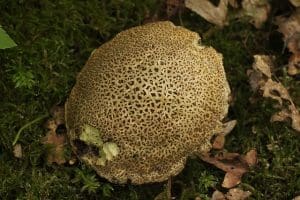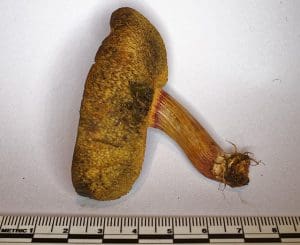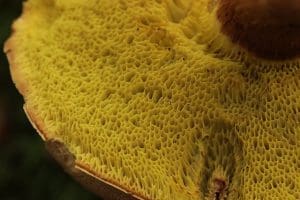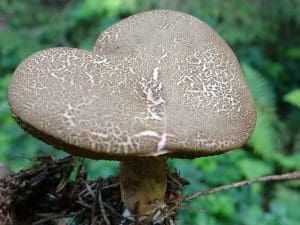Sepia Bolete / Summer / Autumn / Edible
Scientific Name
Xerocomellus Porosporus
Common Names
Sepia Bolete
Family
Boletales
Habitat
Most often associated with Oak but can be found growing with any deciduous tree.
Description
An uncommon and quite rare mushroom to find in the UK, they are more common in mainland Europe.
Identifying Features:
Cap:
Convex when young, they flattening out as they mature, the caps are olive/brown in colour and covered in a ‘crazy paving’ type pattern of shallow cracks.

Stem:
The stem overall is light brown in colour, but tends to be more yellow towards the cap with a red band or ring.

Gills:
Pores rather than gills, they are yellow when young but darken with age and will bruise blue when damaged.

Smell:
Mushroomy.
Spores:
Orange/Brown.
Uses
In food
They are technically edible but they don’t have the greatest texture or taste and as they are quite rare, so they are probably best left alone.
Known hazards
None known.
Potential lookalikes
Other Bolete’s, especially the Red Cracked Bolete (Xerocomellus Chrysenteron), but the red cracked bolete have a completely red stem and tend to show their red flesh through the cracks on the cap.







Leave a Reply
You must be logged in to post a comment.